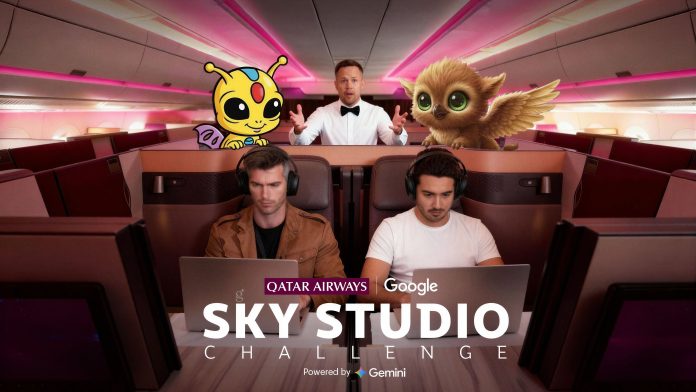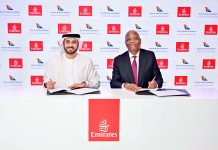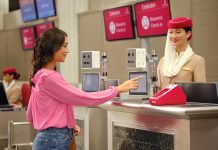Qatar Airways has set a new benchmark for inflight connectivity and creative innovation, unveiling the “Sky Studio Challenge,” a pioneering collaboration with Google that proved full commercial films can now be generated, edited, and published entirely during flight. The breakthrough experiment took place on 17 November 2025 aboard a Starlink-equipped Qatar Airways Airbus A350 flying from Doha to Atlanta—a 15-hour ultra-long-haul route.
Using Google’s latest Gemini image and video generation models, two filmmakers created complete commercials at 35,000 feet, relying solely on the airline’s free, high-speed Starlink Wi-Fi. The process, which included heavy data transfers, real-time cloud workflows, live collaboration with ground teams, rendering and final edits, was completed before the aircraft touched down in Atlanta—an aviation first that demonstrates how far inflight connectivity has advanced.
The challenge brought together two prominent voices in AI filmmaking: PJ Accetturo, known for his visually ambitious, fast-paced commercial style, and Torey Kohara, a filmmaker renowned for cinematic, emotionally resonant storytelling in major tech campaigns. Their contrasting creative approaches showcased the broad artistic potential unlocked when cutting-edge AI tools are paired with ultra-fast inflight internet.
The activation came just one day after Qatar Airways announced it had crossed a major fleet milestone: more than 100 widebody aircraft—split across Boeing 777s and Airbus A350s—are now fitted with Starlink. This makes Qatar Airways the global leader in operating the largest number of Starlink-enabled widebody aircraft and marks a significant stride in its commitment to redefining the passenger experience.
Qatar Airways’ Senior Vice President of Marketing and Corporate Communications, Babar Rahman, said the project reinforces the airline’s position at the forefront of inflight connectivity. He noted that the ability to produce two full commercial films during a single flight “was only possible because our aircraft already fly with the fastest and most reliable Wi-Fi in the sky.” He added that the airline has moved beyond conversations about the future of inflight connectivity and is actively delivering it “across a global network of more than 170 destinations.”
Google’s Regional Marketing Director for the Middle East and Africa, Najeeb Jarrar, praised the experiment as a milestone for creative production, highlighting how AI-driven video generation—powered by models like Veo 3.1 and Gemini—can compress traditional concept-to-delivery timelines into just hours. He expressed enthusiasm for further collaborations that explore the limits of AI-enabled creativity.
While commercials have been filmed inside aircraft before, no brand has ever produced complete AI-generated films mid-flight, edited them in the cloud, and published them before landing. The achievement underscores the power of Starlink’s high-bandwidth, low-latency internet, capable of supporting tasks historically confined to high-performance ground studios.
Both films created during the challenge are now live on Qatar Airways’ YouTube channel, with the winning commercial set to be determined by viewer engagement over one week. Behind-the-scenes footage and onboard content are also available for audiences worldwide.
The “Sky Studio Challenge” marks the latest milestone in the long-standing innovation-focused partnership between Qatar Airways and Google, further demonstrating how next-generation AI tools—and world-class inflight connectivity—are reshaping what is possible in aviation, creativity, and digital storytelling.
















